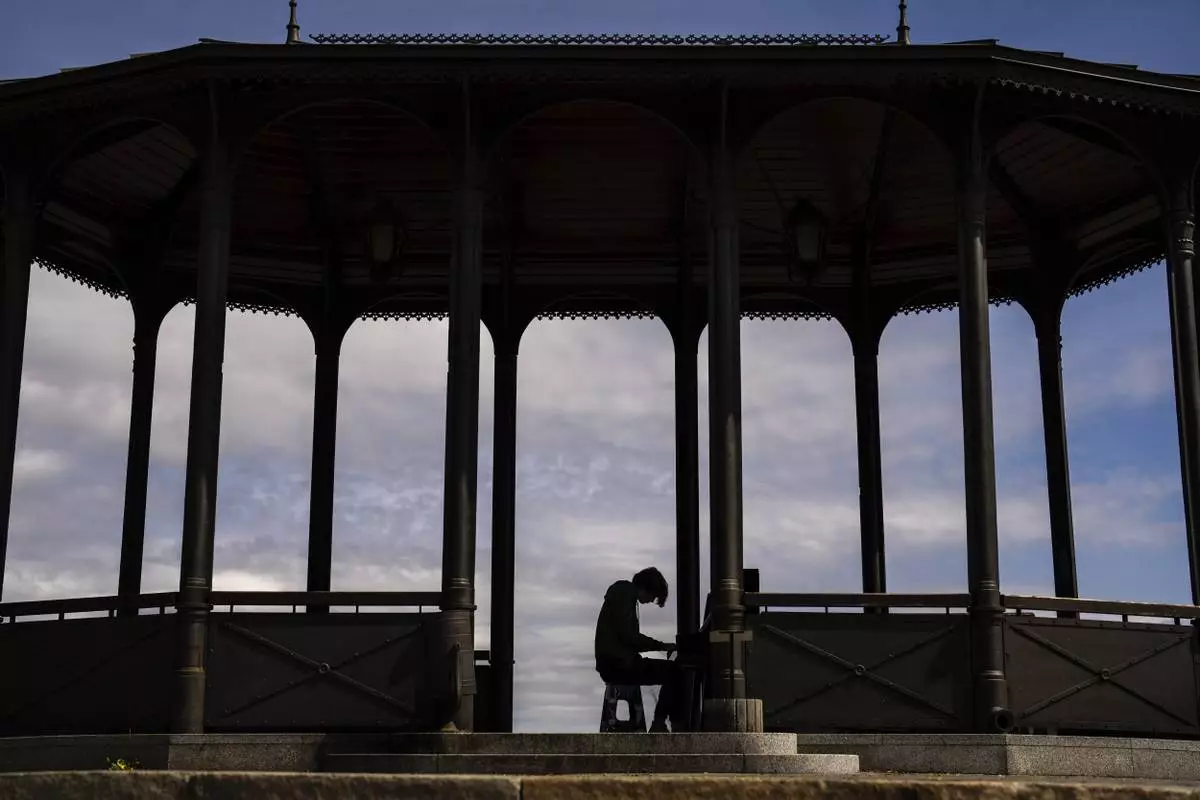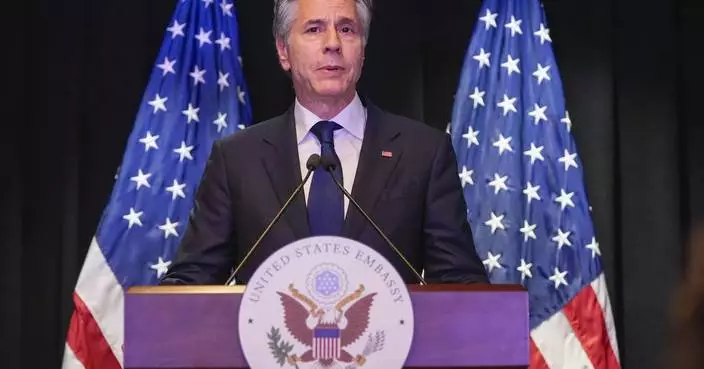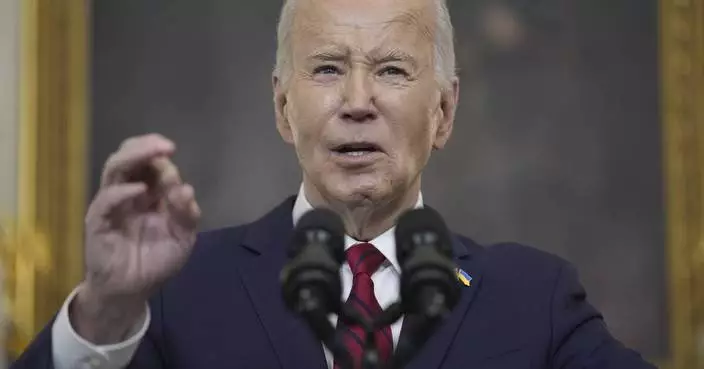Journalists are entitled to hear and not just see the entire process of executing condemned inmates in Arizona, a U.S. appeals court said Tuesday in a ruling that criticized Arizona's "checkered past with executions."
In the case stemming from what a lawyer called a botched execution, the 9th U.S. Circuit Court of Appeals also ruled that the media and death-row inmates are not entitled to information about the origins of execution drugs or the qualifications of executioners.
The case challenges procedures created after the 2014 execution of Joseph Wood, who was given 15 doses of a lethal two-drug combination and repeatedly gasped and snorted during a two-hour ordeal.
The case was filed by seven condemned inmates and the First Amendment Coalition of Arizona. They argued the information on drugs and executioners would help the public determine whether the death penalty is carried out humanely.
The state's procedures currently allow journalists, lawyers and family members to witness executions, first on a video monitor while the inmate is strapped to a table and an intravenous line is inserted, then through a window as drugs are administered.
A microphone is turned off after the IV line is placed, according to the ruling.
The judges found that the process violates the First Amendment because it deprives the media of access to governmental proceedings.
They were not convinced, however, that the First Amendment requires the Arizona Department of Corrections to divulge other information about executions.
The death-row inmates and the First Amendment Coalition argued the state should be required to reveal information about the source and quality of execution drugs — including the manufacturer, supplier, lot number and expiration date — as well as the training of execution team members responsible for inserting IV lines.
"Given Arizona's checkered past with executions, we are troubled by the lack of detailed information regarding execution drugs and personnel," Judge Paul J. Watford wrote in the court's opinion.
However, Watford wrote, there's no First Amendment right to access that information.
Like other states, Arizona has struggled in the past to buy execution drugs after U.S. and European pharmaceutical companies began blocking the use of their products in lethal injections.
In 2015, Arizona tried to illegally import an anesthetic that has been used to carry out executions but is no longer manufactured by companies approved by the Food and Drug Administration. The state never obtained the shipment because federal agents stopped it at the Phoenix airport.
Arizona has not executed anyone since Wood in 2014. After a five-year hiatus, Attorney General Mark Brnovich said in July that the state is poised to resume executions and asked Gov. Doug Ducey for help in obtaining lethal drugs.
There are 116 inmates on death row, including 14 who have exhausted all their appeals.
KYIV, Ukraine (AP) — A Ukrainian court on Friday ordered the detention of the country’s farm minister in the latest high-profile corruption investigation, while Kyiv security officials assessed how they can recover lost battlefield momentum in the war against Russia.
Ukraine’s High Anti-Corruption Court ruled that Agriculture Minister Oleksandr Solskyi should be held in custody for 60 days, but he was released after paying bail of 75 million hryvnias ($1.77 million), a statement said.
Ukraine’s National Anti-Corruption Bureau suspects Solskyi headed an organized crime group that between 2017 and 2021 unlawfully obtained land worth 291 million hryvnias ($6.85 million) and attempted to obtain other land worth 190 million hryvnias ($4.47 million).
Ukraine is trying to root out corruption that has long dogged the country. A dragnet over the past two years has seen Ukraine’s defense minister, top prosecutor, intelligence chief and other senior officials lose their jobs.
That has caused embarrassment and unease as Ukraine receives tens of billions of dollars in foreign aid to help fight Russia’s army, and the European Union and NATO have demanded widespread anti-graft measures before Kyiv can realize its ambition of joining the blocs.
In Ukraine's capital, doctors and ambulance crews evacuated patients from a children’s hospital on Friday after a video circulated online saying Russia planned to attack it.
Parents hefting bags of clothes, toys and food carried toddlers and led young children from the Kyiv City Children’s Hospital No. 1 on the outskirts of the city. Medics helped them into a fleet of waiting ambulances to be transported to other facilities.
In the video, a security official from Russian ally Belarus alleged that military personnel were based in the hospital. Kyiv city authorities said that the claim was “a lie and provocation.”
Kyiv Mayor Vitali Klitschko said that civic authorities were awaiting an assessment from security services before deciding when it was safe to reopen the hospital.
“We cannot risk the lives of our children,” he said.
Meanwhile, Ukrainian President Volodymyr Zelenskyy was due to hold online talks Friday with the Ukraine Defense Contact Group, which has been the key international organization coordinating the delivery of weapons and other aid to Ukraine.
Zelenskyy said late Thursday that the meeting would discuss how to turn around Ukraine’s fortunes on the battlefield. The Kremlin’s forces have gained an edge over Kyiv’s army in recent months as Ukraine grappled with a shortage of ammunition and troops.
Russia, despite sustaining high losses, has been taking control of small settlements as part of its effort to drive deeper into eastern Ukraine after capturing the city of Avdiivka in February, the U.K. defense ministry said Friday.
It’s been slow going for the Kremlin’s troops in eastern Ukraine and is likely to stay that way, according to the Institute for the Study of War. However, the key hilltop town of Chasiv Yar is vulnerable to the Russian onslaught, which is using glide bombs — powerful Soviet-era weapons that were originally unguided but have been retrofitted with a navigational targeting system — that obliterate targets.
“Russian forces do pose a credible threat of seizing Chasiv Yar, although they may not be able to do so rapidly,” the Washington-based think tank said late Thursday.
It added that Russian commanders are likely seeking to advance as much as possible before the arrival in the coming weeks and months of new U.S. military aid, which was held up for six months by political differences in Congress.
While that U.S. help wasn’t forthcoming, Ukraine’s European partners didn’t pick up the slack, according to German’s Kiel Institute for the World Economy, which tracks Ukraine support.
“The European aid in recent months is nowhere near enough to fill the gap left by the lack of U.S. assistance, particularly in the area of ammunition and artillery shells,” it said in a report Thursday.
Ukraine is making a broad effort to take back the initiative in the war after more than two years of fighting. It plans to manufacture more of its own weapons in the future, and is clamping down on young people avoiding conscription, though it will take time to process and train any new recruits.
Jill Lawless contributed to this report.
Follow AP’s coverage of the war in Ukraine at https://apnews.com/hub/russia-ukraine

Ukrainian young acting student Gleb Batonskiy plays piano in a public park in Kyiv, Ukraine, Thursday, April 25, 2024. (AP Photo/Francisco Seco)










